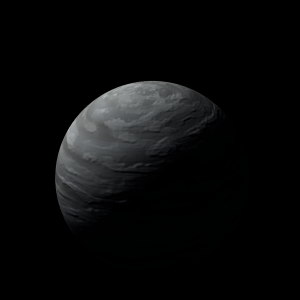|
|
Space Astro
|
Info for exoplanet "Yongrwang"
| Scientific (actual) data |
|---|
| Planet | HD 25171 b |
| Planet status | Confirmed |
| Mass sini | 0.95 |
| Orbital period | 1845 |
| Semi major axis | 3.02 |
| Orbit eccentricity | 0.08 |
| Angular distance | 0.054909 |
| Discovered | 2010 |
| Updated | 2010-12-19 |
| Omega | 96 |
| Tperi | 55301 |
| Publication | Published in a refereed paper |
| Detection type | Radial Velocity |
| Star name | HD 25171 |
| Right ascension | 58.95° |
| Declination | -65.19° |
| Mag v | 7.79 |
| Star distance | 55 |
| Star metallicity | -0.11 |
| Star mass | 1.09 |
| Star radius | 1.18 |
| Star sp type | F8V |
| Star age | 2 |
| Star temperature | 6160 |
| Wikipedia article | HD 25171 b |
Back
| |
| Fictional info (?) |
|---|
| Suggested name | Yongrwang |
| Planet type | Cold planet |
| Yongrwang and Jeshweng are cold planets rich in ice. This cold planet is named after the deity Yongrwang, the spirit of prosperity.
It may have had hydrogen oceans in the past, but these would have vaporized as the temperature rose due to a runaway greenhouse effect.
The latest probe to visit the planet is Pioneer, which entered into orbit around Yongrwang after a very expensive trip. |
| Atmosphere | Ammonium hydrosulfide (NH4SH) | 52% |
| Formaldehyde | 30% |
| Hydrogen | 18% |
| Helium | 0.078% |
| Carbonyl sulfide | 0.05% |
| Nitrogen | 0.0071% |
| Argon | 0.00026% |
| Carbon dioxide | 0% |
| Atmospheric pressure | 16 bar |
 |
| Moon | Kyong | Very small round gaseous moon |
| Google search for Yongrwang |
|
Website by Joachim Michaelis
|
|
|
|